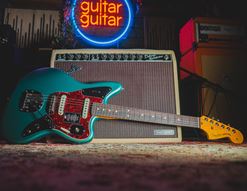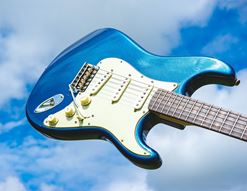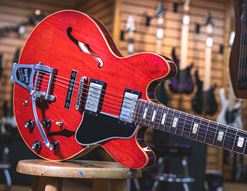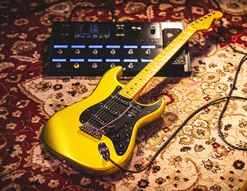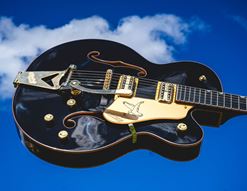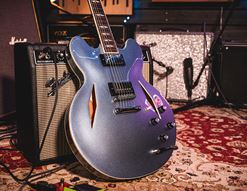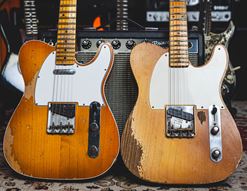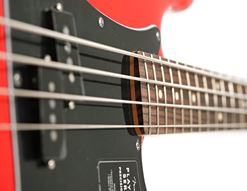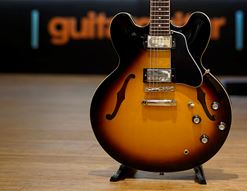Are you a P-Bass person or a J-Bass fan? Not sure? This blog will help! Fender’s top two basses are the most popular in the world, and while they may be superficially similar, they are fundamentally different beasts with their own feel and sound. Today, I’ll outline what makes each model different and possibly help you identify which one you feel more of an affinity for.
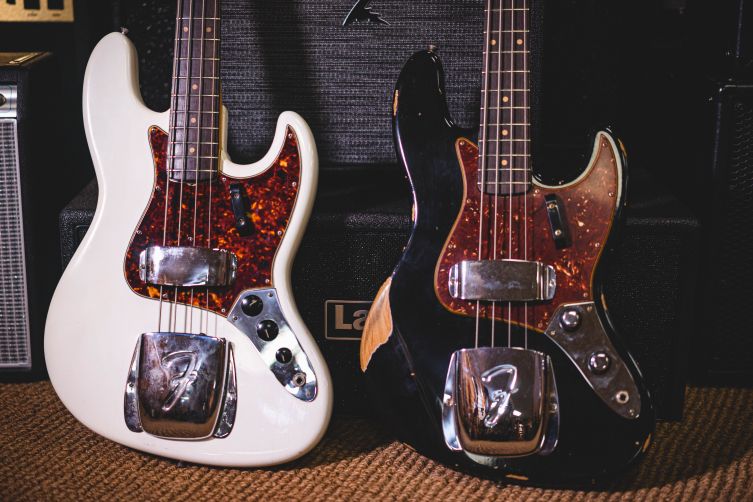
Fender Dominate the Bass World
In the world of bass guitars, Fender are easily the most significant brand. Indeed, it was Leo Fender who invented the bass guitar, simply by thinking of taking a double bass, making it portable, and putting guitar frets into the fingerboard. It was a stroke of genius and it changed the world.
Nowadays, there are thousands of companies who build bass guitars, but the two main Fender models - the Precision Bass and the Jazz Bass - are the blueprints from which almost all others are created. Speaking realistically, I believe it’s fair to say that most bassists will own at least one instrument that is either a Fender or one modelled on those designs. They are so close to being ubiquitous at this point that there's no point pretending otherwise! Fender dominate the bass world like no other company. Given how effective each of their main designs are, this is no surprise!
But which do you prefer? Let me briefly look at each one and then compare the two.
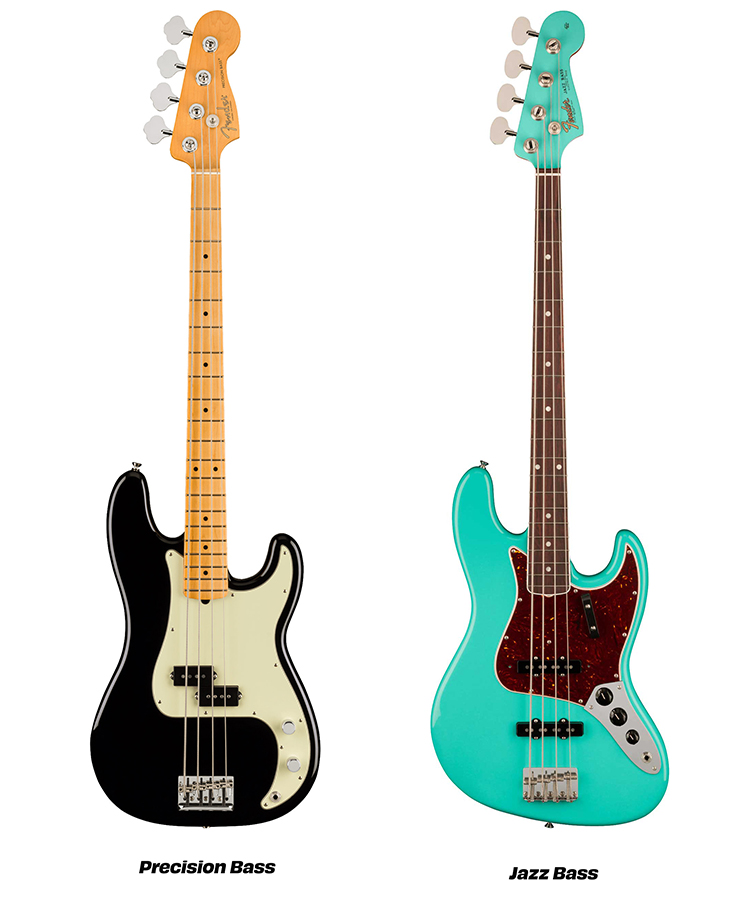
What is a Fender Precision Bass?
- World’s first electric bass guitar
- Phenomenally influential and iconic
The Fender Precision Bass is the world’s first mass-produced electric bass guitar. Leo Fender designed it in 1951, and it was released at the same time as his ‘Broadcaster’ electric guitar, which was quickly renamed the Telecaster.
The P-Bass, as bassists tend to refer to the Precision Bass, is very similar now to how it was in 1954, when Fender changed the design slightly to make it more like the brand new Stratocaster. Previously, it had a non-contoured body, different pickguard and simpler single coil pickup, and you can still find occasional reissue releases like this.
However, the true P-Bass that we all know and love arrived in 1954, pretty much true to today’s form. Here’s the P-Bass, in concentrated bullet-point form:
P-Bass Specs
- Double cutaway body
- Bolted-on 20 fret neck, generally chunky in profile
- 34” scale length
- 43mm nut width
- Large pickguard which curves down to host the controls
- One split coil humbucking pickup
- Master volume and master tone controls
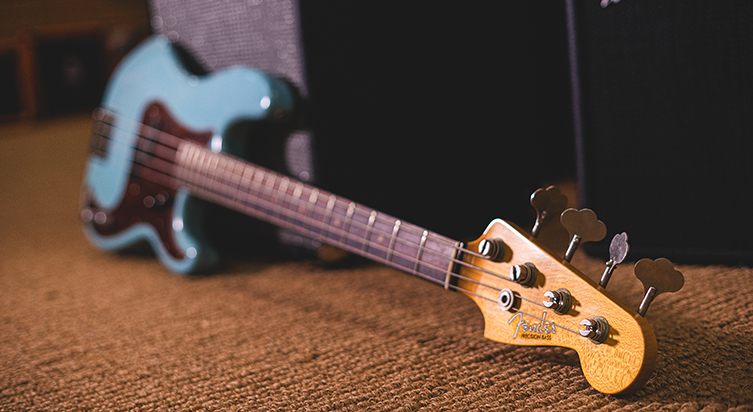
What Does a Fender Precision Bass Sound Like?
- Powerful, direct sound
- Perhaps limited in scope due to simplicity
The P-Bass is a very straightforward instrument, with one great sounding pickup that is excellent for the majority of styles and genres out there. It can sound aggressive, particularly when played with a plectrum/pick. The split coil pickup sits in the middle of the body and offers a strong, thick sound.
Given its simple nature, it's fair to state that the Precision Bass is not the most versatile instrument in terms of range, but then it is also the most recorded bass guitar in history, so what it does, it does extremely well! There is a counter argument here that would ask how many tones bassists really need compared to guitarists?
Prevalent in rock music, the P-Bass is popular in punk, metal, blues, alternative and many other musical environments.
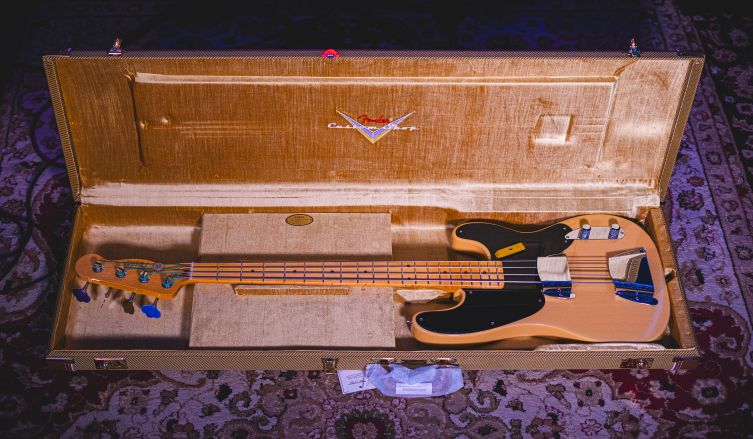
What is a Split Coil Pickup?
The Precision Bass’ split-coil pickup is significant, as it seems to be the world’s first mass produced humbucker. In simple terms, the first P-Bass pickup in 1951 was a regular single coil pickup: essentially a four string version of what came supplied on the Broadcaster/Telecaster. Some players complained about background hum when they turned their equipment up loud, so Leo Fender developed a pickup which got rid of the hum by splitting the pickup into two parts, each dealing with two adjacent strings. The coils around one part were wound in the opposite direction to the coils of the other part, and this opposing polarity situation ‘bucked’ the hum.
So, although the Precision Bass pickup isn’t a ‘humbucker’ like you’d find on, say, a Gibson Les Paul, it achieves a similar solution via a different method and featuring a different sound.

What is a Fender Jazz Bass?
The Fender Jazz Bass is another phenomenally popular design. If the P-Bass found its true guise alongside the Stratocaster, then one could say that the Jazz Bass was released as the perfect partner to the Jazzmaster. You can see the similarities, from the offset body to the metal control panel and general aesthetic.
The Jazz Bass has been in continual production since 1960 (it was actually originally called the ‘Deluxe’), and here are its main attributes:
J-Bass Specs
- Offset body, double cutaway
- Alder, Ash, Basswood and other timbers
- 20 fret bolted-on neck with a slim profile
- 34” scale length
- Narrower nut width of 38mm
- Two single coil pickups
- Individual volume controls to blend each pickup
- Two volume controls, one master tone control knob
What are the Differences Between the Fender Precision Bass and the Fender Jazz Bass?
- Different signature sounds
- Visually separate
- Markedly different playing experience
Now, on to the main differences between these models. I think it’s important to weigh up the relative benefits of both styles, and realise that neither instrument is inherently better than the other. More pointedly, it's about which one is better for you. Let me detail some significant differences…
P-Bass vs J-Bass
P-Bass
- Thicker, stronger sound with more fundamental frequency
- Split coil pickup is hum-cancelling
- One pickup
- Large, chunky neck profile
- Neck is wider (43mm at the nut) and chunkier
- Symmetrical bottom half
J-Bass
- Brighter sound with more top end and less midrange focus
- Pickups are RWRP (reverse-wound, reverse polarity)
- Hum cancelling when pickups are set to full volume
- Two pickups
- Slimmer neck profile
- Narrower and slimmer neck (38mm at the nut)
- Offset waist
PJ Bass Option
One thing I have not mentioned so far is the ‘PJ Configuration’. What’s that? PJ simply refers to Precision and Jazz, and means that the bass in question will have both a split coil pickup from a P-Bass and a single coil pickup from a Jazz Bass. For many, it’s the only choice to go for, because it’s the best of both worlds. To others, it is either too much, unnecessary, or it alters the delicate balance of sounds they prefer from a dedicated Precision Bass or Jazz Bass.
What you need to do is try one and see if the PJ pickup configuration works for you! We are all different, and that’s why there are so many variations of these two famous bass designs out there!
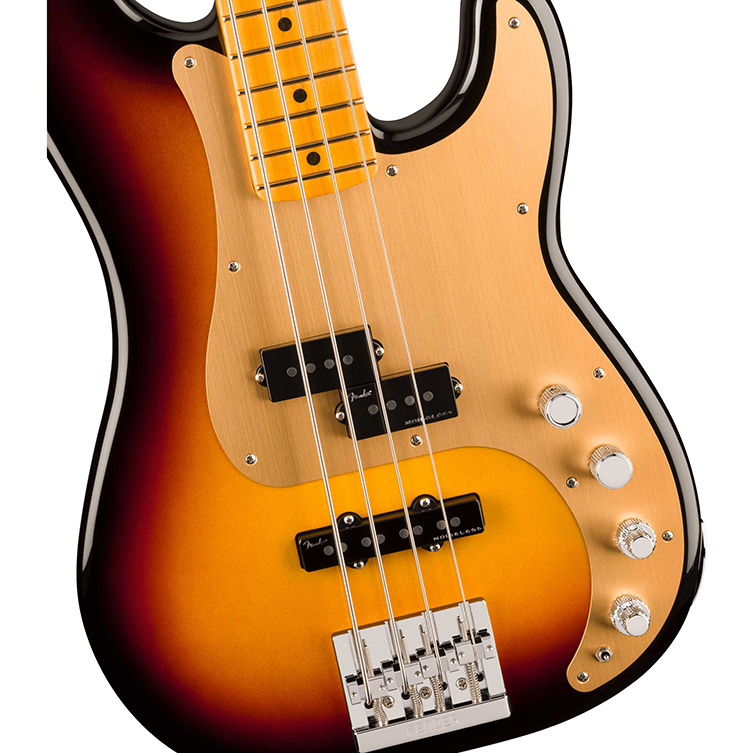
Which Bass is Best for You?
So, what does that mean for players? Well, the Jazz Bass’ toppier sound is clearer and perhaps better for lead parts and slap bass technique. It has a ‘scooped’ tone that suits more melodic and detailed playing.
For straight-up power though, it's perhaps fair to say that the thick, midrange-rich tones of the Precision bass are hard to beat. The bigger, wider neck also maybe promotes a more ‘no nonsense’ sensibility that helps to make the P-Bass a favourite choice for punks and rockstars.
In an ideal world, I feel like all bassists should at least have access to both of these four string titans. They each have their own flavour, their own strengths and, depending on how & where they’re used, their own drawbacks too. Whilst there may be no such thing as ‘one bass to rule them all’ as it were, I’m tempted to remind you of just how ubiquitous the P-Bass has been on worldwide record-breaking albums!

On the other hand, lots of players of all sizes find the P-Bass a tad unwieldy, and vastly prefer the somewhat slinkier Jazz Bass. You may want to zip around the neck more easily; you may have smaller hands and like the narrower nut width. In reality, there are lots of small preferences that add up to whether you prefer one bass over the other.
Sometimes, you just feel like playing a certain style in favour of another, which is why choosing one of each - eventually, if not right away - is perhaps the ultimate choice.

